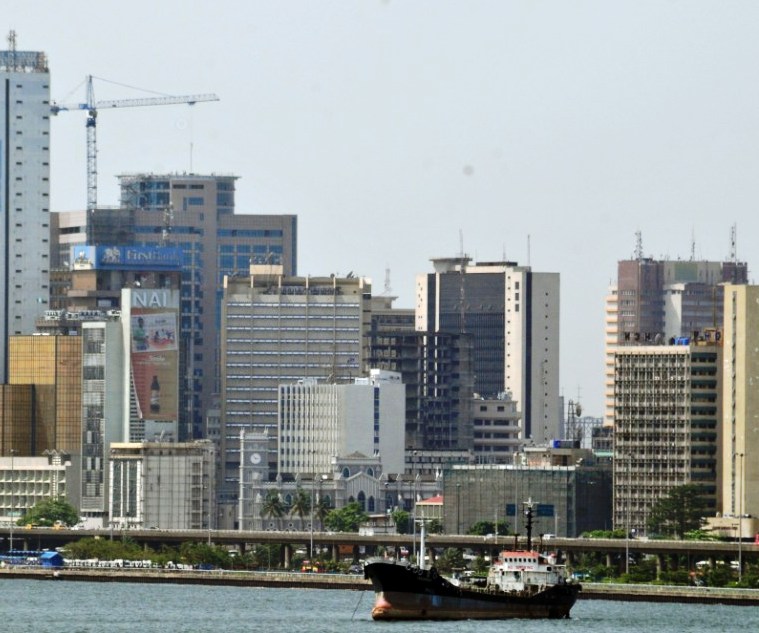Global Economy
According to the US Bureau of Labor Statistics (BLS), consumer prices rose for the second consecutive month, expanding by 30bps to 2.7% y/y in June (May: 2.4% y/y). Analyzing the breakdown, food inflation (+3.0% y/y vs May: +2.9% y/y) inched higher due to a rise in food at home prices (+2.4% y/y vs May: +2.2% y/y), while the cost of food away from home (+3.8% y/y vs May: +3.8% y/y) was unchanged. Core inflation also inched higher by 10bps to 2.9% y/y (May: 2.8% y/y), amid notable increases in prices for medical care, motor vehicle insurance, and recreation, offsetting the moderation in shelter costs.
Elsewhere, energy inflation (-0.8% y/y vs May: -3.5% y/y) declined at a softer pace, reflecting the mild contraction in fuel oil price (-4.7% y/y vs May: -8.6% y/y), while gasoline prices (-8.3% y/y vs May: -1.2% y/y) dipped further. On a month-on-month basis, headline inflation rose by 0.3% in June (May: +0.1% m/m). We believe the near-term inflation outlook remains tilted to the upside, reflecting early pass-through from recently imposed tariffs on appliances, electronics, and furnishings.
Though some retailers are still working through pre-tariff inventories, the notable price increases in tariff-exposed items such as appliances, furniture, and toys indicate emerging pressure on consumer prices. As older inventories run out, we expect stronger inflationary effects in H2-25. Consequently, we expect the US Fed to keep the funds rate unchanged at the next monetary policy meeting, in line with the CME FedWatch Tool’s 97.4% probability of a “HOLD” decision on July 30.
Based on the data obtained from the National Bureau of Statistics (NBS) of China, the second-largest economy grew by 5.2% y/y in Q2-25 (Q1-25: +5.4% y/y | Q2-24: +4.7% y/y) – above market expectations (+5.1% y/y). The growth was supported by policy-driven momentum in infrastructure and industrial production, alongside front-loaded exports ahead of rising US tariffs.
However, domestic demand remained subdued amid persistent weakness in the property market and cautious consumer spending. We note that while industrial output improved, retail sales and property investment underperformed, pointing to fragile underlying momentum. On a quarter-on-quarter basis, the economy expanded by 1.1% (Q1-25: +1.2% q/q).
We expect the Chinese economy to face renewed headwinds in H2-25, despite the temporary easing in trade tensions following the mutual rollback of tariffs by the US (from 145.0% to 30.0%) and China (from 125.0% to 10.0%). While this 90-day truce provides short-term relief for exporters and manufacturers, uncertainty remains elevated as the agreement is set to expire in mid-August.
Beyond trade, lingering weakness in the property sector and sluggish household consumption continue to weigh on domestic demand. Accordingly, we see limited scope for China to meet its 2025FY growth target of 5.0%. Notably, the IMF recently downgraded China’s 2025 growth forecast to 4.0% y/y (Prev. estimate: 4.6% y/y | 2024FY: 5.0% y/y).
Global Markets
Global equities traded largely higher this week, buoyed by robust economic data and strong corporate earnings out of the US and Europe, which helped offset lingering trade concerns. At the time of writing, US equities (DJIA: +0.3%; S&P 500: +0.6%) were set for a weekly gain, buoyed by strong Q2 earnings from Netflix, PepsiCo, and United Airlines. Investor sentiment was further lifted by better-than-expected retail sales and weekly jobless claims data which reinforced growth expectations and, alongside President Trump’s denial of plans to remove Fed Chair Jerome Powell, easing policy uncertainty concerns.
Similarly, European (STOXX Europe 600: +0.3%; FTSE 100: +0.5%) equities are on track to close higher, supported by strong corporate earnings, industrial sector gains, and optimism surrounding a potential US–EU agreement. Asian (Nikkei 225: +0.6%; SSE Composite: +0.7%) markets, mirrored the upbeat mood from Wall Street amid encouraging US economic signals and strong tech earnings, which helped offset concerns about ongoing trade tensions. Lastly, the Emerging Market (MSCI EM: +1.0%) index gained on the back of strength in China (+0.7%), while the Frontier Market (MSCI FM: +1.7%) index was lifted by robust gains in Vietnam (+2.1%) and Romania (+4.6%).
Nigeria: Domestic Economy
According to the National Bureau of Statistics (NBS), headline inflation eased by 75bps to 22.22% y/y in June (May: 22.97% y/y), marking the third consecutive month of moderation. Analysing the breakdown, consumer prices increased across the food (+83bps to 21.97% y/y), and core inflation (+48bps to 22.26% y/y) baskets.
On a month-on-month basis, headline inflation increased by 15bps to 1.68% m/m (May: 1.53% m/m), in line with the increase in both food and core inflation. Specifically, food inflation surged by 107bps to 3.25% m/m (May: 2.19% m/m), reflecting a rebound in the imported food sub-basket (+30bps m/m vs May: -170bps m/m) despite the moderation in the farm produce sub-basket, (-189bps m/m vs May: +269bps m/m).
At the same time, core inflation increased by 136bps to 2.46% m/m (May: 1.10% m/m) primarily due to higher prices across Transport, ICT, Alcoholic Beverages and Tobacco sub-baskets. Looking ahead, we expect headline inflation to ease further in July, supported by a moderation in both food and core inflation components. Specifically, we anticipate the slowdown in food prices to be supported by improved market supply from early green harvests and the relative stability of the naira, which is expected to reduce pressure on imported food prices.
Similarly, core inflation is projected to remain broadly stable, supported by a reduced exchange rate pass-through effect and steady energy prices.
Based on the data obtained from the Nigerian Upstream Petroleum Regulatory Commission (NUPRC), Nigeria’s crude oil production (including condensates) rose to a five-month high in June, rising by 2.4% m/m to 1.70 mb/d (May: 1.66 mb/d). The increase was driven by higher output from the Forcados (+9.5% m/m), Odudu (+9.0% m/m), Qua Iboe (+2.3% m/m) and Bonny (+1.0% m/m) terminals.
Conversely, production declined at the Brass (-15.0% m/m), Agbami (-14.6% m/m), Escravos (-8.7% m/m) and Tulja – Okwuibome (-4.5% m/m) terminals. Overall, average crude oil production increased by 11.3% y/y to 1.68mb/d in H1-25 (H1-24: 1.51mb/d). Although investment momentum is gradually improving, lingering underinvestment continues to constrain production efficiency and contribute to intermittent fluctuation in output. Nevertheless, we expect that improved security conditions and sustained investment efforts will support average production levels above 1.60 mb/d. Thus, we retain our projection of average crude oil production (including condensates) at 1.70 mb/d in 2025FY (Previously: 1.68mb/d) – below the Federal Government’s target of 2.06 mb/d.
Capital Markets: Equities
The domestic bourse extended its bullish run this week, posting gains across all four trading sessions. Notably, the NGX All-Share Index crossed the 130,000 psychological mark for the first time, advancing by 4.3% w/w to close at 131,585.21 points. The rally was driven by strong demand for cement bellwethers—DANGCEM (+15.5%) and BUACEMENT (+31.3%)—on the back of robust earnings expectations, alongside bargain-hunting in NESTLE (+20.0%), STANBIC (+18.4%), and FIRSTHOLDCO (+16.5%).
As a result, the month-to-date and year-to-date returns improved to +9.7% and +27.8%, respectively. On market activity, trading volume and value increased by 224.6% w/w and364.5% w/w, respectively. . Meanwhile, sectoral performance was mixed, with the Industrial Goods (+19.2%) index posting the most significant gain, followed by advances in the Banking (+5.4%) and Consumer Goods (+1.3%) indices. On the flip side, the Insurance (–3.6%) and Industrial Goods (–0.8%) indices closed lower.
In the week ahead, we expect investors’ broad-based sentiment to be shaped by the outcome of the upcoming MPC meeting, as participants evaluate its impact on yields and equity valuations. However, pending the outcome of the meeting, we expect market activities to be in a lull, with some investors possibly booking profits from the extended rally.
Money Market and Fixed Income
The overnight (OVN) rate expanded by 50bps w/w to 32.7%, as the financial system’s liquidity weakened further, despite inflows from FGN bond coupon (NGN65.36 billion). Due to the absence of key inflows (particularly from FAAC remittances), average system liquidity tightened further to settle at a net short position (NGN465.18 billion) compared to a net long position of NGN148.29 billion in the previous week.
Barring any mop-up activities by CBN, we expect inflows from FGN bond coupon payments (NGN284.73 billion) to boost system liquidity, albeit moderately. However, factoring in potential inflows from FAAC remittances, we expect the OVN rate to taper.
Treasury Bills
The Treasury bills secondary market maintained bullish strides, as investors continued to price in possible monetary policy easing in the upcoming Monetary Policy Committee (MPC) meeting, slated for 21 and 22 July 2025. As a result, average yield across all instruments declined by 20bps to 21.3%. Across the market segments, the average yield declined by 53bps to 18.3% in the NTB segment and expanded by 19bps to 24.5% in the OMO segment.
We expect the outcome of the CBN’s MPC meeting to broadly shape the direction of yields in the Treasury bills secondary market. Meanwhile, the expected improvement in system liquidity could further boost investor sentiment.
Bonds
The FGN bond secondary market traded with bullish sentiments driven by demand from local investors. Accordingly, the average yield declined by 29bps to 16.5%. Across the benchmark curve, the average yield declined at the short (-55bps), mid (-25bps) and long (-17bps) segments, driven by the demand for the MAR-2027 (-119bps), FEB-2034 (-51BPS) and JAN-2042 (-46bps) bonds, respectively.
We expect the outcome of the upcoming MPC meeting to shape the direction of bond yields across all market segments. Nonetheless, we expect investors to explore the option of coupon re-investment, in a bid to exploit the current level of bond yields. Over the medium term, we still expect a moderation in bond yields, influenced by two factors – (1) the anticipated dovish monetary policy stance and (2) demand and supply dynamics.
Foreign Exchange
The naira depreciated by 0.1% w/w to NGN1,532.11/USD despite CBN’s intervention, selling c.USD80.00 million to the market. Meanwhile, gross FX reserves increased for the second consecutive week, growing by USD422.16 million w/w to USD37.85 billion (17 July). In the forwards market, the naira rates depreciated across the 1-month (-0.4% to NGN1,578.53/USD), 3-month (-0.5% to NGN1,654.49/USD), 6-month (-0.7% to NGN1,763.13/USD) and 1-year (-1.0% to NGN1,972.98/USD) contracts.
We expect FX liquidity to remain robust, supported by reduced global pressures and stronger market confidence, which continues to attract inflows from foreign portfolio investors (FPIs). Additionally, a stronger net FX reserve position enhances the CBN’s capacity to intervene when necessary. Barring any unexpected shocks, we anticipate that the naira will remain stable in the near term.
Cordros





















